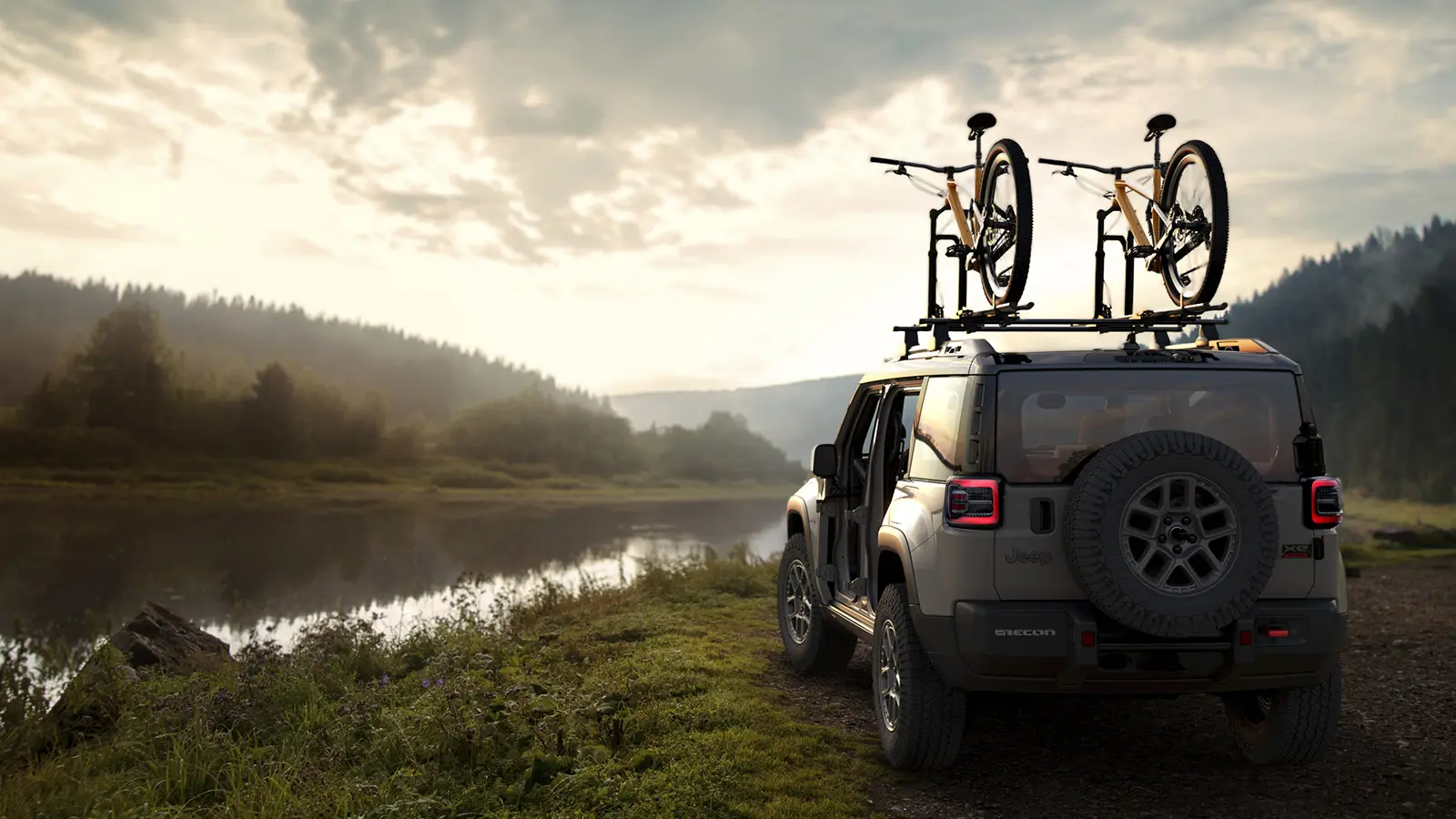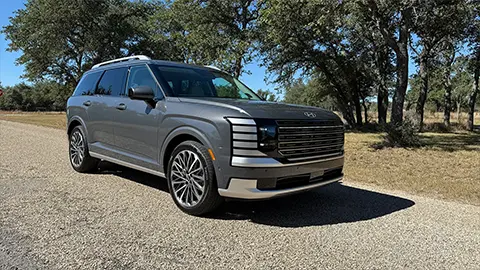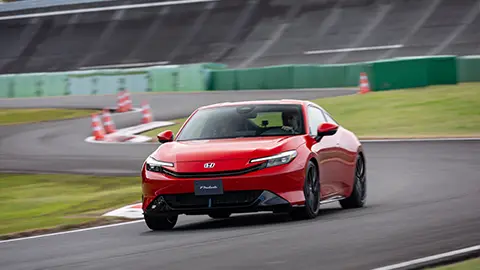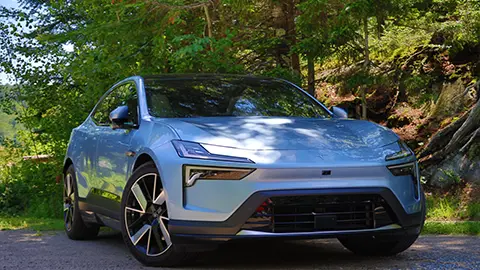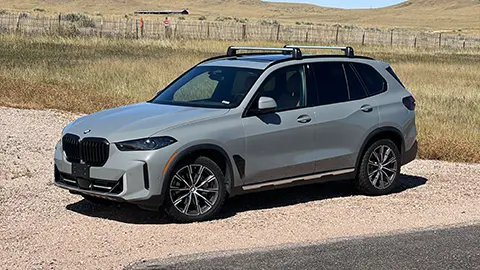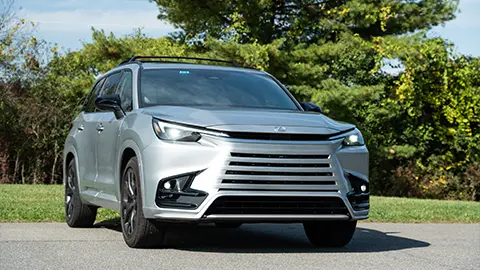Fast Facts | 2026 Jeep Recon
⚡ Power: 650 hp and 620 lb-ft from dual EDMs
🌄 Capability: Trail Rated testing in Moab with locking rear diff
🛠️ Design: Removable doors/windows and optional Sky One-Touch roof
📏 Size: Roomier cabin than Wrangler with more hip and shoulder room
🔋 Battery: 100.5 kWh pack with 230–250 miles estimated range
🚘 Rival: Aims at Rivian R2 and Wrangler buyers wanting EV comfort

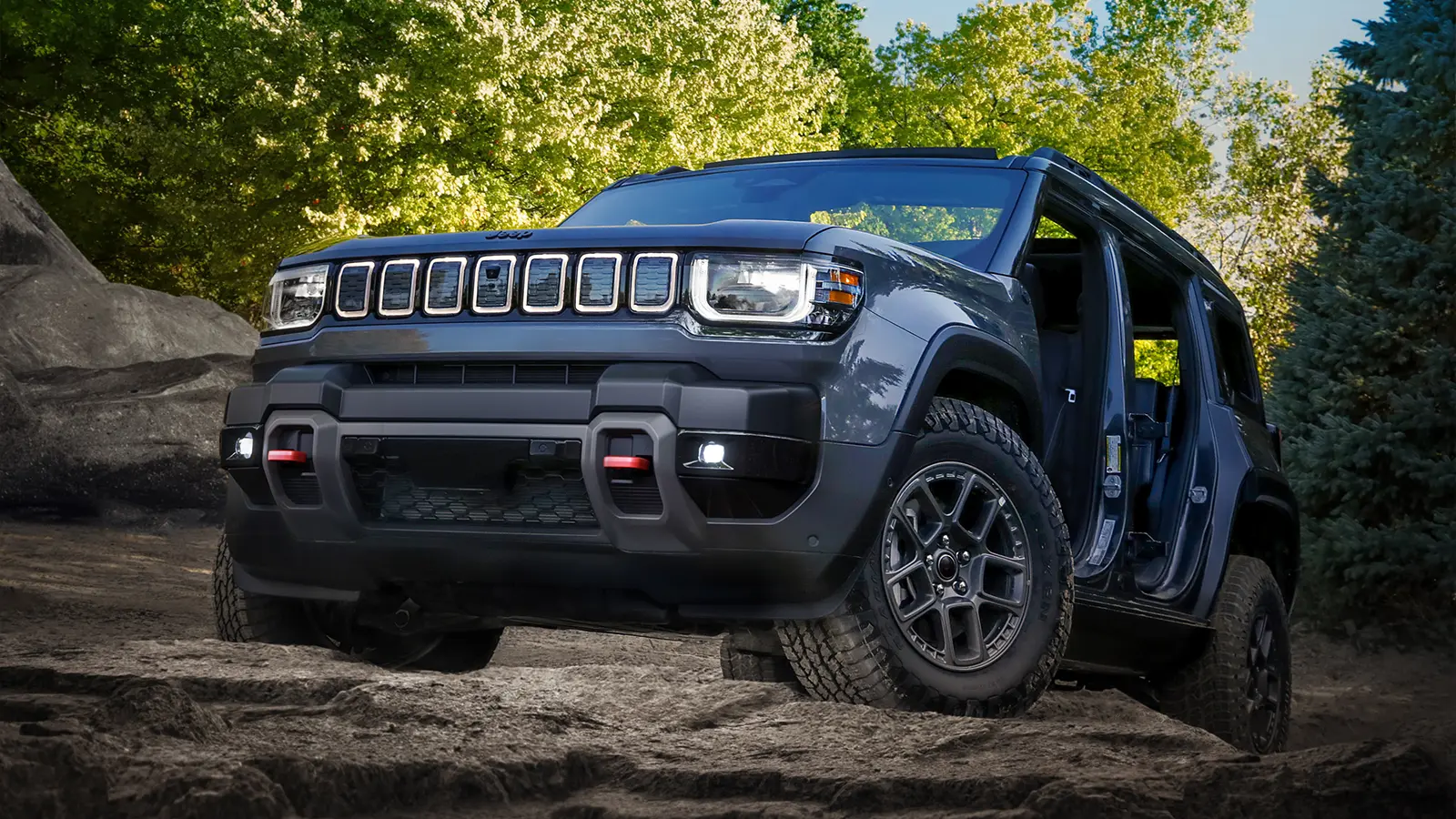
Jeep’s Electric Future Takes Shape
Back in 2022, when Jeep released the first images of the Wagoneer S, a very on-road-only vehicle, it also showed another all-new EV that looked like it might live up to the brand's off-road heritage: the Recon. Both vehicles are additions to the Jeep lineup rather than replacements for existing internal combustion engine models. The Wagoneer S is an electric complement to the similarly sized Grand Cherokee, while the Recon will sit alongside the Wrangler.
Like many Stallentis EVs planned for North America, the Recon experienced a number of delays as the company dealt with issues in its core business, including falling sales, as well as adjusting its overall product strategy. Now, it’s finally ready to come to market, and we had the chance to take a closer look at Jeep's electric off-roader.


An Electric Jeep For the Trail
The Recon is a fundamentally different vehicle from the Wrangler, even if it's targeting the same audience. While the Wrangler shares its design DNA with the 1941 Willys MB that served in World War II, Jeep VP of Design Vince Galante says the Recon has more in common with the 1980s Cherokee XJ. It certainly shares a similar boxy character, but its taller, more upright proportions arguably draw more on the current Ford Bronco than the XJ.
Those proportions give it some distinct packaging advantages over the four-door Wrangler, whose vintage shape has always resulted in a narrow cabin compared with its overall width. The Recon has its big advantage here, at about 5 inches longer and an inch wider than the Wrangler, it has 1.3 inches more front hip room, 2.8 inches more shoulder room, and overall 7.6 cubic feet more passenger volume. Compared to the Bronco, it's 4 inches longer and an inch narrower.

Open-Air Freedom, Jeep Style
One aspect the Recon shares with both the Bronco and Wrangler is its ability to offer exposure to the outdoors. The Recon’s doors, rear quarter, and rear windows are all removable, and the fabric Sky One-Touch roof is available as an option, while a dual-pane panoramic sunroof is standard. One advantage the Recon has over its rivals is the door removal process, which requires no tools; just swing the door out past 90 degrees and lift it off the hinge.
Like the four-door Wrangler, the Recon’s doors have full frames for the side glass, so they can’t be stored in the vehicle as the Bronco's doors can. Unfortunately, one lesson Jeep didn’t take from the Bronco is mounting the side mirrors on the fenders instead of the doors, so they'll stay with the doors in your garage. As with the Wrangler, accessory mirrors are available to use when the doors are off.

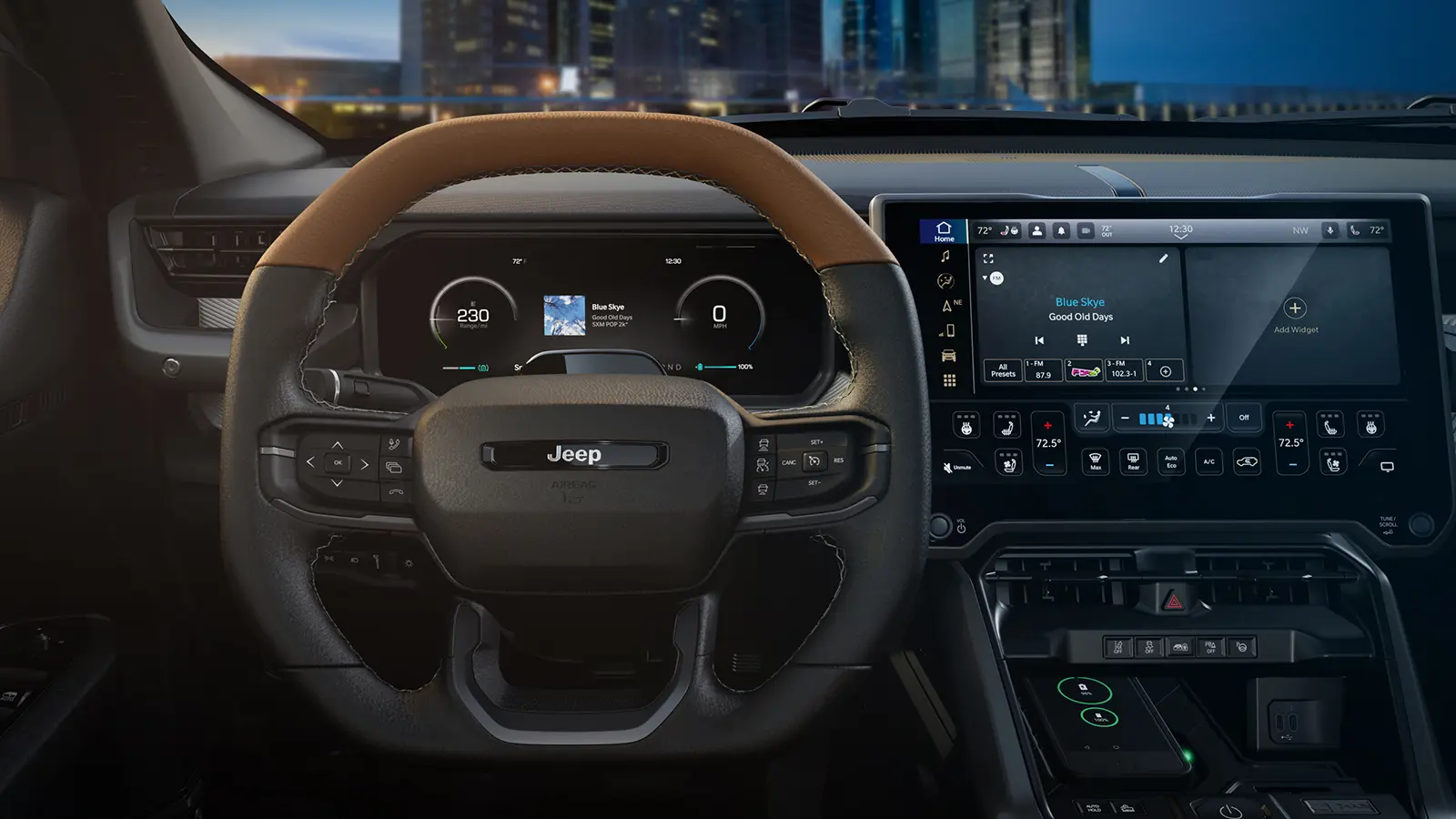
Rugged but Modern Cabin
The cabin of the Recon retains the purposeful look drivers of an off-road Jeep would want while amping up the technology. There’s a grab handle on the passenger side of the dashboard and pockets in the doors with elastic straps to retain items like water bottles, and the straps are removable to allow the insertion of different cargo options, like small coolers. The center touchscreen measures 14.5 inches and features the Uconnect 5 infotainment software. Unfortunately, climate controls are all touch-activated rather than physical knobs and switches, although they're always present on the lower portion of the screen.
On top of the dashboard, drivers can install an accessory mount bar to hold action cameras, walkie-talkies, or anything they want handy when off-roading. The center console has a rotary knob for gear selection and a pair of rocker switches to engage the rear locking differential and select the drive mode — Sport, Auto, Snow, Sand/Mud, or Rock. There’s also a full suite of driver assist features standard, including adaptive cruise control, active lane management, active driving assist, blind-spot monitoring, and more.
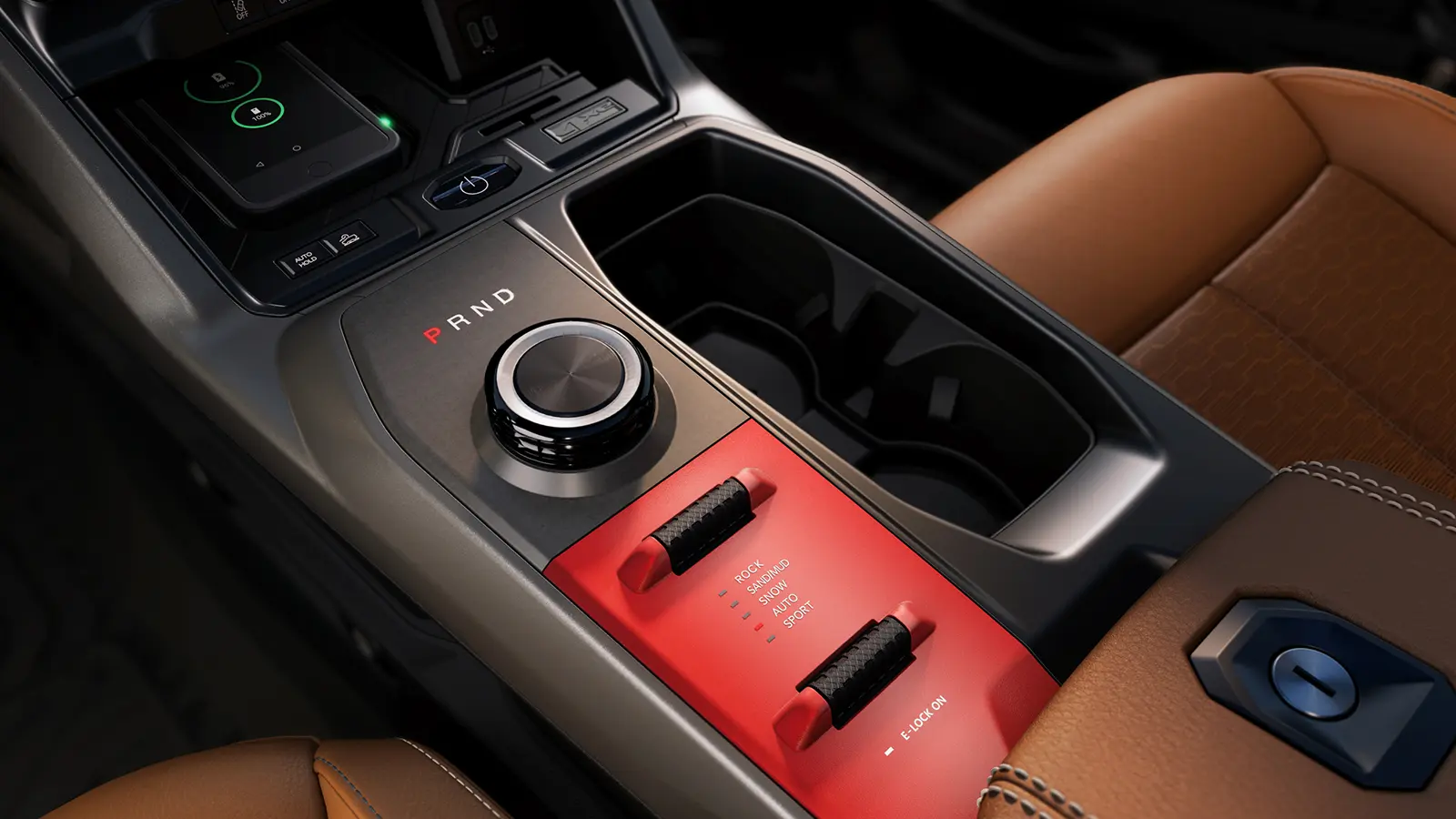
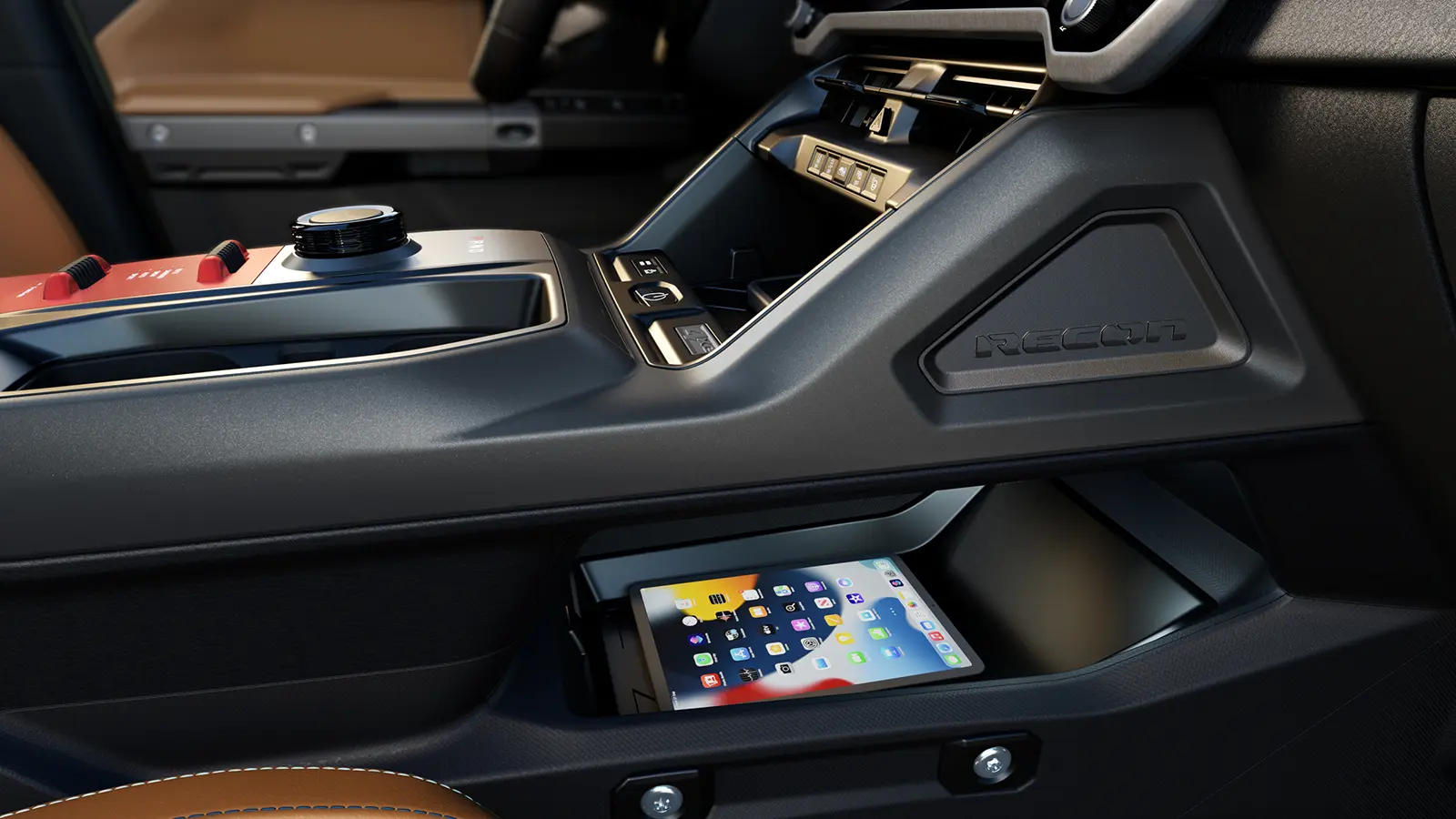
Trail Rated?
Jeep is calling the Recon its first “Trail Rated” electric off-roader. Getting the Trail Rated badge on the fenders implies a certain level of capability, and Jeep has been validating the Recon in places like Moab, Utah, and in various locations in Michigan. But not all Trail Rated Jeeps are created equal, and while the Recon might be able to go a lot of places, it’s not going to be able to follow a Wrangler Rubicon everywhere.
At launch, there's only one configuration available, with dual 250-kilowatt electric drive modules (EDMs) producing a total output of 650 horsepower and 620 pound-feet of torque. These are largely the same EDMs used on the Wagoneer S and Dodge Charger Daytona, but the Recon gets a different 15:1 final drive ratio, which should help with low-speed crawling off-road since this Jeep doesn’t offer a dedicated low-range four-wheel drive system right now. The other notable change is the addition of an electronic locking differential on the rear EDM. The front axle will have to make do with an open differential, and the engineers will have to synchronize the front and rear motor control to emulate a center locker.
The shape of the Recon is specifically designed to optimize the approach and departure angles, which are impressive at 33.8 and 33.1 degrees, respectively, but still fall short of even the base Wrangler Sport. At 9.1 inches, the ground clearance with the 33-inch wheels is also 0.6 inch shy of the Wrangler Sport and 3.8 inches less than the Rubicon with 35-inch wheels. Jeep hasn't said what the maximum wheel/tire size is for the Recon, but based on the photos, those 33s might be the limit without modifications to the wheel wells. The 24-inch water fording depth is also quite capable, but 6 inches less than the base Wrangler.
The Recon has a short-long-arm front suspension and integral link rear layout. That means it won’t have the articulation capability of the Wrangler that rides on solid front and rear axles, but it should ride a lot better than its sibling on the road.
This new EV uses the same 100.5-kilowatt-hour battery pack found in the Wagoneer S and Charger, but the taller profile, boxy aesthetic, and all-terrain tires drop the expected range down to only about 230 miles in the Moab trim, which is the only trim available at launch. Other trims available later should yield about 250 miles. For comparison, the base Rivian R1S with the smallest battery is rated at 270 miles, while the max battery is rated at up to 410 miles.
Made for a Certain Kind of Off-Roader
The 2026 Jeep Recon is scheduled to start production early in 2026, with deliveries starting soon after. The Recon Moab will start at $66,995, including destination. That’s about $7,000 more than a Wrangler Rubicon X, which is considerably more capable off-road, and about $12,000 less than a standard-range Rivian R1S with a third row and more range. The closest competitor to the Recon will probably be the Rivian R2 coming next spring, which will be priced $20,000 lower, although details like range and performance are still unknown. The Recon certainly has better packaging than the Wrangler, and customers who want to stick to driving on the beach, to a cabin, or on the road may prefer this combination.
🔌 More Electrified Jeep & Off-Road Reads
- 2025 Jeep Wagoneer S EV Launch Edition Review
A deep dive into Jeep’s luxury all-EV move, packing 600 hp and breaking new ground.
Read More ➜ - Road Test: Jeep Wrangler 4xe
The plug-in hybrid sibling of the Recon’s off-road legacy—offers real context on Jeep electrified trail capability.
Read More ➜ - 2023 Jeep Grand Cherokee 4xe Overland Review
A premium Jeep PHEV that blends luxury, efficiency and off-road capability—helpful contrast for the Recon’s positioning.
Read More ➜





